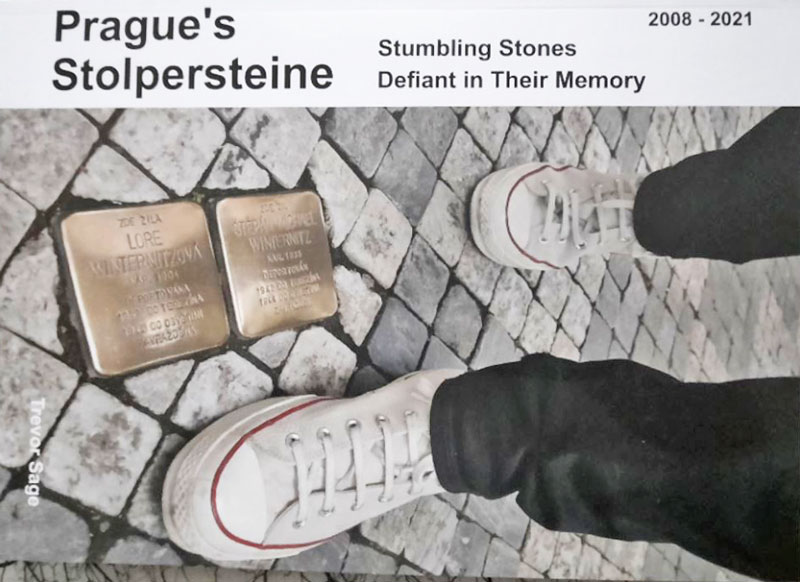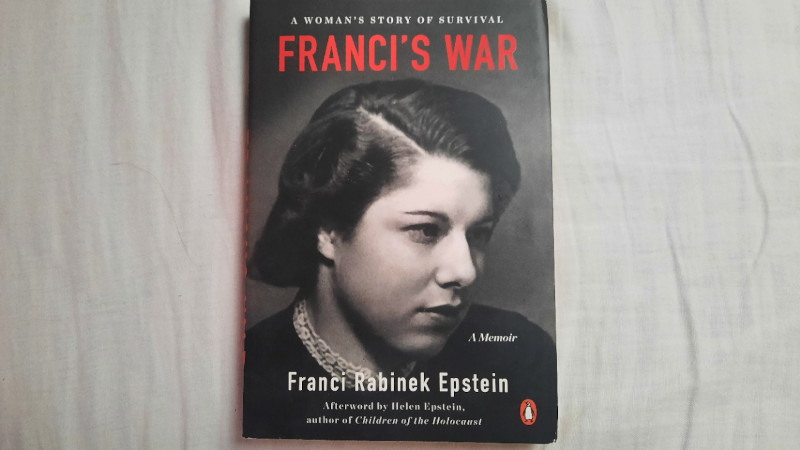Stolpersteine – Prague Stumble Stones
When I first wrote about the Prague Stumble Stones back in 2013 I called them the Prague Jewish Plaques and I had not yet found out about a man called Gunter Demnig. I’ve since learned much more about them and his work so I’ve now gone back to rewrite about them under my “Inspirational” category. You’ll find Prague Stumble Stones all over the city so let me pose and answer a few questions and be sure to check the interesting update at the end.

Why Are They Called Stumble Stones?
This is a direct translation from the German term Stolpersteine.
Where Do They Originate?
In 1990 when Gunter Demnig was marking the route where Roma had been deported from the city of Cologne he was told by a woman that “Roma” had never lived in that area. In a time of ethnic-cleansing, Gunter Demnig was looking for a way to reintroduce the memory of these deported people back into their old neighbourhoods. The ground location is specifically because it’s easier to get the permission of the city to install in the pavement than to get the permission of the building owner to put something on the wall. As there are few maps to show the placement of the stones then people will naturally “stumble” across them. The current project started in 1996.
What Are They For?
The are located in the ground at the front of a property (or where a property once stood). Usually it’s the last freely chosen residence of somebody that was deported from that place between 1939 and 1944 (the joining of the Stumble Stone with the last residence is referred to as co-location) but does not have to be Jewish. Some of the original stones in Germany were placed for deportations of Roma and Sinti in 1940. They also commemorate homosexuals, political opponents, mentally ill, Freemasons, criminals and non-Facists etc and the list goes on. As of April 2023 there are more than 90,000 stumble stones spread over more than 2000 cities/towns in 28 European countries so it constitutes the largest decentralised wartime memorial in the world.
So They Commemorate People That Died in WW2?
The majority of the Prague Stumble Stones relate to people who were specifically deported from their home with the ultimate aim to kill them. They also commemorate people that survived the deportation and people that were forced to emigrate. The object cover plaques are usually 10cm by 10cm and made of brass. In some cities you may find “stolperschwellen” (threshold) which is a longer version 100cm by 10cm to memorialise a group of disabled people (there are none in Prague). An example of stolperschwellen in Germany is at the Stralsund main train station where it records the fact that 1169 mentally ill people were deported for execution in 1939 under the “Aktion T4” program.

What Can You Learn From Stumble Stones?
Prague Stumble Stones text is always in the local language. Almost every Stone starts “Here Lived”, followed by the name/title of the person, year of birth, the year of the first deportation from Prague. If known, it then shows the year when the person was deported, the name of the camp, final status (sometimes the actual date of death) and possible where they died. The final status has the word “Zavražden” (for a male) and “Zavraždena” (for a female) which translates as “Murdered”. A few have “Osvobozena” which translates as “Survived” or “Made Free”. From the ages and names you can discern relationships. Look out for “Roz” on a Stolperstein which indicates the “born” name. This is usually a maiden name for a woman but can be for a man in circumstances where his birth name is German and it was changed to a Czech name after WW2. When you see an adult pair then in most cases its husband and wife but there are exceptions like when it’s brother and sister or an in-law.
Who Started This and When?
The idea for Stolpersteine i.e. the positioning of a plaque marking a deportation started in 1992 when the first ever plaque was installed outside Cologne City Hall. Etched into it are the first lines of the original declaration by Heinrich Himmler which began the deportation process called the “Auschwitz Decree” which was read from the balcony of the city hall exactly 50 years earlier. Later, the design of the brass plaque that sits on top of the actual stone was changed to a rounded corner plate with the first stones of this type being laid unofficially in 1996 in Cologne and Berlin. In the Czech Republic the first was installed in 1998. In Prague it was 2008. The man behind the project is called Gunter Demnig who was born a Berliner but resides in Cologne.
Unusual Trivia
It’s up to a town or city to authorise the installation of Stolpersteine. Several towns in Germany have so far not given that permission including the cities of Leipzig and Munich. In Belgium and Holland there have been Stumble Stones produced but not yet installed due to residents objections. Whereas most of the Stumble Stones are sponsored, in the city of Frankfurt am Main the resident(s) of the apartment at which the stone will be co-located is required to pay for it. In Berlin, the number of Stumble Stones has grown from 50 in 1996 to more than 7000. The creation of a Stumble Stone requires the consent of a living relative and relatives are very often present at the laying ceremony.
How Do I Learn More?
Stumble Stones are included on both the WW2 Walking Tour and Old Town and Jewish Quarter Walking Tour where I share some of the more unusual stories of the Prague Stumble Stones and what happened to their descendants. You can also check the official Wikipedia pages which often contain detail right to the point of identifying the exact transport designations. Gunter Demnig’s own Stolpersteine website is listed below. You can also sponsor the construction of a Stumble Stone (details on the Stolpersteine site).
http://www.facebook.com/stolpersteineprague (Stones in Prague)
http://stolpersteinecz.cz/en/ (Stones in various Czech cities/towns)
https://en.wikipedia.org/wiki/Gunter_Demnig
http://www.stolpersteine.eu/en/home/
https://en.wikipedia.org/wiki/List_of_cities_by_country_that_have_stolpersteine
The BookS

There’s also a book which details 460 of the stones in Prague. The review of the book plus the locations where you can buy it in Prague, the ISBN etc and approximate prices are on the Prague’s Stolpersteine book review.

Franci’s War is a memoir of one of the survivors of the Prague deportees. She has a Stolpersteine in the street called Spalena along with her parents who both died in the Holocaust. Read the Book Review – Franci’s War.
An Interesting Update
In September 2019 I was invited to a laying ceremony. That’s when Gunter Demnig lays the stones. I have to say that September 5th changed the way I look at these stones. I got to chat with Gunter and really start to understand the ethos behind this project, his own sacrifices and commitment. They are not just memorials. There are stories and present-day emotions behind all of these stones. So below, a few memories from the day.





So I hope that this project will be an inspiration to you and here’s a short Video of Gunter Demnig Laying Stumble Stones.